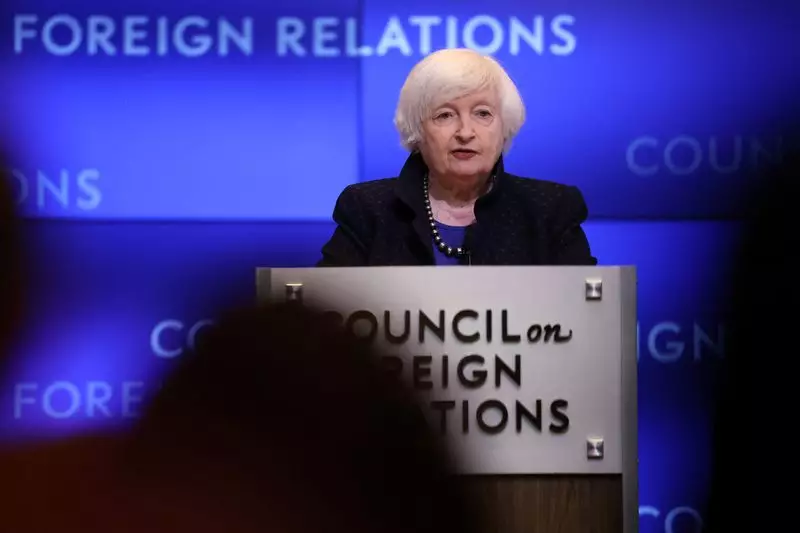The COVID-19 pandemic tested economies globally, pushing governments to implement extraordinary measures to stabilize their markets and protect their citizens. In the United States, the Biden administration’s approach, characterized by significant stimulus spending and targeted social safety nets, has sparked considerable debate. Treasury Secretary Janet Yellen’s recent arguments supporting these policies illuminate the delicate balance between stimulating economic recovery and managing inflationary pressures, a contention that continues to reverberate through policy discussions.
During her final speech before leaving office, Yellen articulated a robust defense of the Biden administration’s fiscal policies aimed at mitigating the pandemic’s impact. She emphasized that the stimulus checks, enhanced unemployment benefits, and the Child Tax Credit were pivotal in maintaining consumer activity and supporting dislocated workers. By providing direct financial assistance to Americans, the administration sought to reduce potential job losses and avert deeper economic downturns, which, as Yellen noted, could have resulted in millions more unemployed and significant income disparities.
Yellen’s assertions reflect a broader understanding that government interventions during crises serve as critical lifelines, ensuring that citizens can sustain their basic economic needs. The one-time stimulus measures and ongoing relief efforts helped to maintain consumer confidence and spending, even in a climate rife with uncertainty. As she reviewed the economic landscape, Yellen pointed out the glaring difference between America’s recovery trajectory and that of other advanced economies, stressing that the U.S. rebounded more effectively from the economic abyss created by the pandemic.
However, the approach hasn’t come without its detractors, particularly regarding the inflation that surged as a byproduct of expansive fiscal policy. In a candid moment, Yellen admitted that the stimulus contributed to inflation, a truth that complicates her optimistic assessment of the economic recovery. While inflation is often seen as a negative economic indicator, requiring aggressive monetary policies to manage, it serves as a reminder of the delicate interplay between stimulating demand and controlling price levels.
Amid rising costs, the treasury secretary highlighted how U.S. inflation rates cooled earlier than in other wealthy nations, suggesting that the recovery measures were effective—even under persistent inflationary pressures. The nuanced argument Yellen presents revolves around the idea that a stringent anti-inflation approach could have worsened employment disparities, underscoring the importance of balancing fiscal support with inflation management.
Despite the apparent successes, Yellen cautioned that structural economic challenges remain. The contemporary economy, while marked by low unemployment rates and solid growth, is still fraught with barriers that inhibit many families from achieving stability and prosperity. She urged a continual evaluation of economic policies beyond immediate outputs, advocating for long-term investments in infrastructure, education, and workforce development.
This perspective can reshape the narrative surrounding what constitutes effective economic policy. Rather than merely focusing on short-term recovery measures, Yellen’s vision aligns with a broader conception of “modern supply-side economics,” wherein investment in human capital and public infrastructure is viewed as essential for fostering sustainable growth. The notion that tax cuts and deregulation alone will stimulate broad-based prosperity is increasingly being challenged by evidence of stagnant wages and growing economic inequality.
The dynamic landscape of the post-pandemic economy calls for policymakers to assess not only the immediate effects of their actions but also their long-term ramifications. Janet Yellen’s defense of the Biden administration’s strategies underscores the complexity of economic governance during tumultuous times. As the United States forges ahead, balancing growth with inflation control and addressing structural inequalities will necessitate a holistic approach to fiscal policy. Through sustained investment in public welfare and infrastructure, the country may well find a path towards an economy that is not only robust in recovery but equitable in its growth opportunities. This enduring commitment will be critical in shaping an economic environment where all citizens can thrive.

